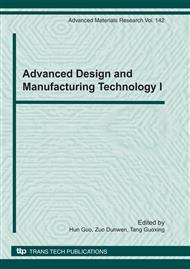[1]
Mangu L, Brill E, Stolcke A: Computer Speech and Language Vol. 14 (2000) No. 4, pp.373-400.
Google Scholar
[2]
Zhang L, Chang J X, Xiang X Z: Topic Indexing of Spoken Documents Based on Optimized N-Best Approach, Proceedings of ICIS, China (2009).
DOI: 10.1109/icicisys.2009.5357691
Google Scholar
[3]
Xue J, Zhao Y X: Improved confusion network algorithm and shortest path search from word lattice, Proceedings of ICASSP, Philadelphia, PA 2005, pp.353-356.
DOI: 10.1109/icassp.2005.1415248
Google Scholar
[4]
Tur G., Wright J, and Gorin A, et al: Improving spoken language understanding using word confusion networks, Proceedings of ICSLP, Denver, Colorado, 2002, pp.1137-1140.
DOI: 10.21437/icslp.2002-374
Google Scholar
[5]
Xue J and Zhao Y X: Random forests-based confidence annotation using novel feature from confusion network, Proceedings of ICASSPJ, Toulouse, France 2006, pp.1149-1152.
DOI: 10.1109/icassp.2006.1660229
Google Scholar
[6]
Bertoldi N and Federico M: A new decoder for spoken language translation based on confusion networks, IEEE ASRU Workshop, Cancun, Mexico, 2005, pp.134-140.
DOI: 10.1109/asru.2005.1566492
Google Scholar
[7]
Hillard D and Ostendorf M: Compensation forward posterior estimation bias in confusion networks, Proceedings of ICASSP Toulouse, France, 2006, pp.1153-1156.
Google Scholar
[8]
Tur G, Hakkani D and Riccardi G: Extending boosting for call classification using word confusion networks, Proceedings of IEEE International conference on acoustic, Speech, and signal Processing, 2004, pp.1520-6149.
DOI: 10.1109/icassp.2004.1326016
Google Scholar
[9]
Stolcke A, Konig Y, Weintraub M, Explicit word error minimization in N-best list rescoring, Proceedings of EUROSPEECH, 1997, pp.163-166.
DOI: 10.21437/eurospeech.1997-68
Google Scholar
[10]
Wu B, Liu G, Guo J: Research on confusion network algorithm for mandarin large vocabulary continuous speech recognition, Proceedings of ICWAPR, China, 2007: 145-155.
DOI: 10.1109/icwapr.2007.4421593
Google Scholar
[11]
Wang H L, Han J Q, Zheng T R: Quality evaluation and optimization of confusion network, Proceedings of ICMIP, (2005).
Google Scholar


